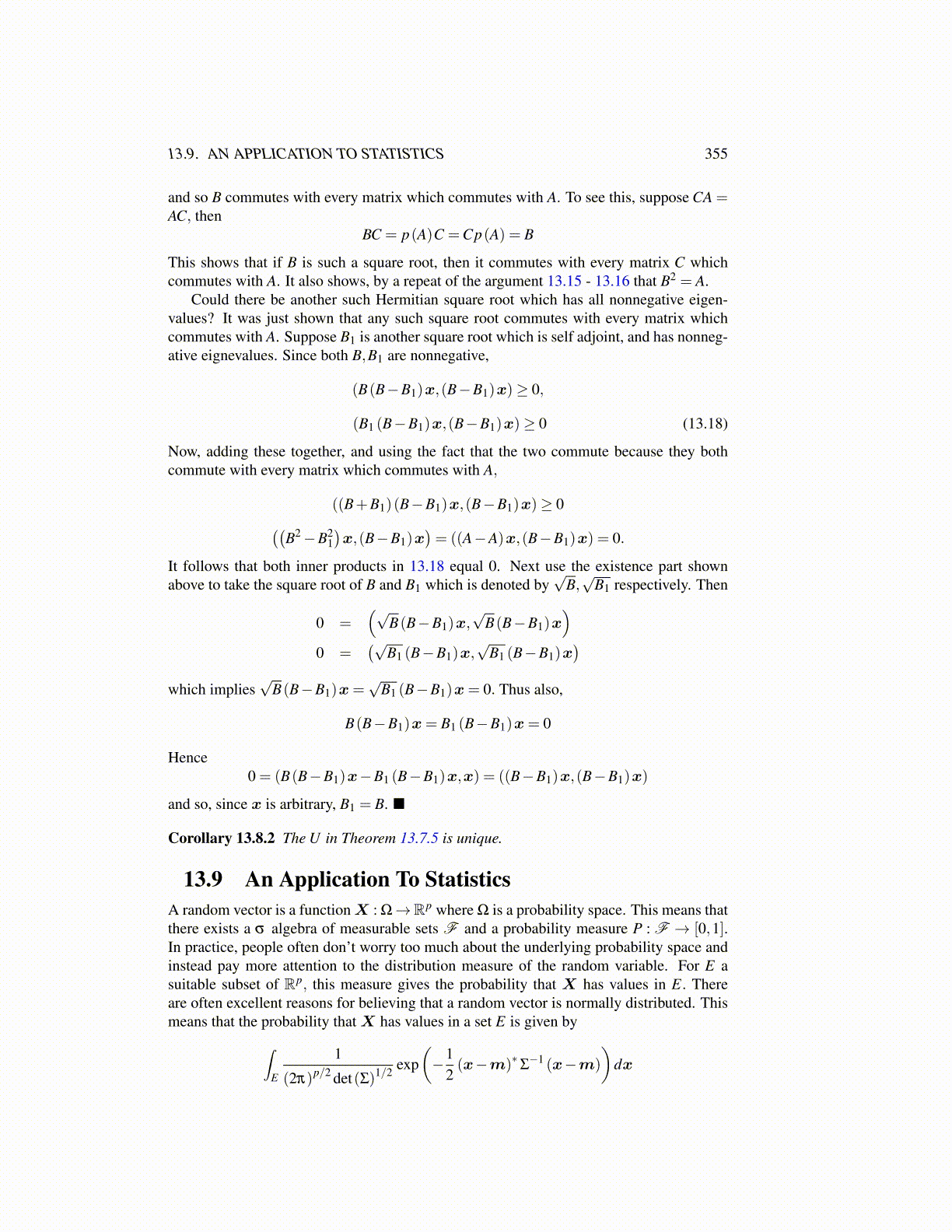
13.9. AN APPLICATION TO STATISTICS 355
and so B commutes with every matrix which commutes with A. To see this, suppose CA =AC, then
BC = p(A)C =Cp(A) = B
This shows that if B is such a square root, then it commutes with every matrix C whichcommutes with A. It also shows, by a repeat of the argument 13.15 - 13.16 that B2 = A.
Could there be another such Hermitian square root which has all nonnegative eigen-values? It was just shown that any such square root commutes with every matrix whichcommutes with A. Suppose B1 is another square root which is self adjoint, and has nonneg-ative eignevalues. Since both B,B1 are nonnegative,
(B(B−B1)x,(B−B1)x)≥ 0,
(B1 (B−B1)x,(B−B1)x)≥ 0 (13.18)
Now, adding these together, and using the fact that the two commute because they bothcommute with every matrix which commutes with A,
((B+B1)(B−B1)x,(B−B1)x)≥ 0((B2−B2
1)x,(B−B1)x
)= ((A−A)x,(B−B1)x) = 0.
It follows that both inner products in 13.18 equal 0. Next use the existence part shownabove to take the square root of B and B1 which is denoted by
√B,√
B1 respectively. Then
0 =(√
B(B−B1)x,√
B(B−B1)x)
0 =(√
B1 (B−B1)x,√
B1 (B−B1)x)
which implies√
B(B−B1)x=√
B1 (B−B1)x= 0. Thus also,
B(B−B1)x= B1 (B−B1)x= 0
Hence0 = (B(B−B1)x−B1 (B−B1)x,x) = ((B−B1)x,(B−B1)x)
and so, since x is arbitrary, B1 = B. ■
Corollary 13.8.2 The U in Theorem 13.7.5 is unique.
13.9 An Application To StatisticsA random vector is a function X : Ω→Rp where Ω is a probability space. This means thatthere exists a σ algebra of measurable sets F and a probability measure P : F → [0,1].In practice, people often don’t worry too much about the underlying probability space andinstead pay more attention to the distribution measure of the random variable. For E asuitable subset of Rp, this measure gives the probability that X has values in E. Thereare often excellent reasons for believing that a random vector is normally distributed. Thismeans that the probability that X has values in a set E is given by∫
E
1
(2π)p/2 det(Σ)1/2 exp(−1
2(x−m)∗Σ
−1 (x−m)
)dx